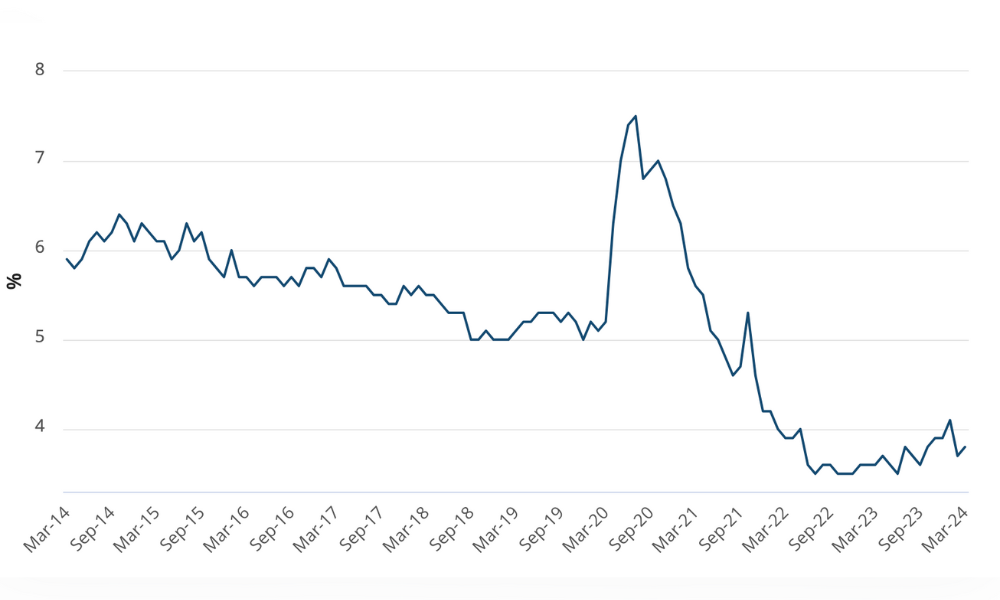NINETY-FIVE PER CENT of senior employees work after hours
NINETY-FIVE PER CENT of senior employees work after hours. A survey of more than 500 executives and professionals revealed that respondents typically worked evenings, weekends and during their commute. The survey also revealed how often respondents worked after normal working hours:
Frequently 65%
Occasionally 9%
Sometimes 1%
Many believed that their employers were responsible for creating the situations that lead to overwork and 70 per cent respondents said the organisations they worked for did not do a good job at fostering a work-life balance.
Source: MRINetwork
Men more likely to use sex appeal
TWENTY PER CENT of Australian men would sleep with their boss for a raise or a promotion. A recent survey of 1,000 Australians also found that men (44 per cent) were twice as likely to have used their powers of flirtation to advance their career as women (22 per cent). Overall, 84 per cent of respondents believe it is unethical for an attractive or charming employee to use their sex appeal to advance their career.
Source: HR Live
Bonuses make all the difference
MEDIAN BASIC salaries across the financial services sector in the UK rose by 4.2 per cent in 2007, while total cash rose by 5.4 per cent. Furthermore, average total cash (which includes salaries and bonuses) rose by between 1 per cent and 11 per cent last year, depending on job function. Jobs which typically saw lower than average median total cash increases included purchasing (1 per cent), technical (4 per cent) and credit/lending (4 per cent). Total cash increases were higher for directors and senior managers (7 per cent) compared with junior professionals (5 per cent).
Source: Watson Wyatt
Recruiting and retaining talent is top priority
THREE OUT of four American executives rank succession planning as their most significant challenge for the future. According to a survey of 526 C-suite executives, 71 per cent said the most pressing problems are providing leaders with the skills they need to be successful and recruiting and selecting talented employees (69 per cent). Other future challenges facing companies regardless of size, location or industry were engaging and retaining talented employees and rising health care costs.
Source: SHRM
Hong Kong disillusioned with leadership
SEVENTY-THREE PER CENT of employees in Hong Kong are either actively looking for another job, would consider another offer or have already made plans to leave their current job, largely because of a lack of engagement and the gap between what leaders are saying and what they are actually doing. A study of more than 1,000 employees in Hong Kong revealed that only 25 per cent of employees feel senior management is sincerely interested in employee wellbeing. The study also revealed that while excellent career advancement opportunities sit at the top of drivers for attraction, only 26 per cent of employees believe their employers are providing such opportunities.
Source: Towers Perrin
Sales: an unattractive profession
FORTY-SIX PER CENT of people with buying responsibility wouldn’t be proud to call themselves sales professionals. A survey of 2,700 corporate buyers from Australia, Canada, France, Germany, the US and the UK revealed some of the descriptions of salespeople included “charm school graduates”, “leeches” and “rashes.” Forty-one per cent of respondents rated the overall quality of the sales profession as fair or poor. When asked what makes a good salesperson, respondents cited product or service advice, market knowledge and trust as the top three qualities they value the most in a salesperson.
Source: DDI
New Year’s job resolutions
FIFTY-FIVE PER CENT of Australian workers’ top job resolution is to strike a better work-life balance in 2008. A survey of 329 workers revealed that respondents’ top New Year’s job resolution is to work smarter rather than harder. Other top job resolutions revealed were:
Be more innovative 44%
Be proactive and dynamic 38%
Network more 35%
Other job resolutions cited were: learn to say no (25 per cent), get into a learning program (24 per cent), say no to overtime with no pay (10 per cent), make a concerted effort to get on with colleagues (9 per cent), outsource where feasible (5 per cent) and learn to say yes (2 per cent).
Source: Talent2
Customer service quality falls short
THIRTY-THREE PER CENT of consumers have higher customer service expectations today than they did just last year. A survey of more than 3,500 consumers across five continents found that 52 per cent of respondents’ expectations for better service have increased over the past five years. However the findings indicate that increases in customer service expectations outpace efforts made by companies to improve service, with 47 per cent of respondents saying their expectations were met only sometimes, rarely or never.
Source: Accenture
Variety and flexibility: key for contractors
THIRTY-SEVEN PER CENT of contract workers cite variety and flexibility as the main benefits of temporary and contracting work. A survey which was conducted to find out what attracts temporary and contracting staff to organisations revealed other top incentives were:
Higher pay 29%
Build skill levels 22%
Avoid office politics 12%
As the nature of work changes and businesses require highly skilled and flexible resources, the survey showed that many companies are increasingly interested in taking on temporary and contracting employees.
Source: Hamilton James & Bruce
Not all about the money
ONLY TWENTY-SIX per cent of employees cite money as the most important factor in job satisfaction. A survey of more than 1,000 Australian workers found that the type of work is the most important factor (59 per cent). After the nature of work and remuneration and benefits, respondents cited work-life integration as the third most important factor. However, high overall satisfaction ratings in a company are no guarantee against high staff turnover, with four out of 10 employees about to seek work elsewhere and one in four employees who said they were satisfied with their workplace were still planning to leave.
Source: Astor Levin








